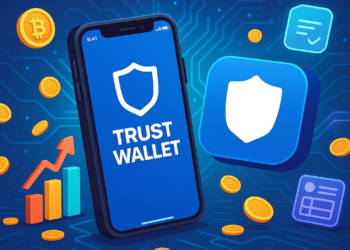The crypto world is full of opportunities—but also full of risks. With thousands of new projects launching every year, scams like rug pulls and Ponzi schemes have become increasingly common. While some projects promise sky-high returns, many of them are nothing more than well-disguised traps designed to steal investors’ money.
So, how do you identify and avoid crypto scams? In this guide, we’ll break down the red flags of rug pulls, Ponzi schemes, and other fraudulent projects, and give you actionable steps to protect your investments.
🔹 Keep your crypto safe! Use a Trezor Hardware Wallet to store your assets securely.
1. What Are Rug Pulls?
A rug pull is a type of crypto scam where developers create a project, build hype, and then suddenly disappear with investors’ funds. This usually happens in DeFi (Decentralized Finance) projects or NFT collections.
Types of Rug Pulls:
1️⃣ Liquidity Rug Pull – Developers remove liquidity from a trading pair, making it impossible for investors to sell.
2️⃣ Dump & Abandon – Developers mint massive amounts of tokens, artificially pump the price, and then sell their holdings before abandoning the project.
3️⃣ Malicious Contract Codes – Smart contracts are coded with hidden loopholes that allow developers to drain user funds.
Red Flags to Watch Out For:
❌ Anonymous Developers – No transparency about the team behind the project.
❌ No Smart Contract Audit – Unverified or unaudited contracts could be unsafe.
❌ Too Good to Be True Returns – Unrealistic APY or staking rewards (e.g., “1,000,000% APY!”).
❌ Centralized Control – If only the developers can control liquidity or change tokenomics, it’s a huge risk.
🔹 Want to secure your long-term crypto holdings? Use a Trezor Wallet.
2. What Are Ponzi Schemes in Crypto?
A Ponzi scheme is a fraudulent investment model where old investors are paid with funds from new investors. These schemes collapse once there aren’t enough new participants to pay existing ones.
How to Spot a Crypto Ponzi Scheme:
❌ Guaranteed Returns – No legitimate investment guarantees profits.
❌ Referral-Based Rewards – If recruiting new members is the main way to make money, it’s likely a scam.
❌ Lack of Transparency – If a project refuses to disclose how they generate profits, be cautious.
❌ No Real Product or Use Case – Ponzi schemes rely on marketing hype rather than real utility.
🚨 Example of a Famous Crypto Ponzi: Bitconnect (BCC) – Promised massive returns through an “automated trading bot,” but turned out to be a massive Ponzi that stole billions.
3. Common Crypto Scam Techniques & How to Avoid Them
Scammers are creative, so it’s essential to recognize different fraud tactics:
📌 Fake Airdrops & Giveaways
- Scammers impersonate influencers or companies, promising free crypto in exchange for private keys or seed phrases.
✅ How to avoid: Never give out personal information; legit giveaways will never ask for funds.
📌 Phishing Scams
- Fake websites and emails trick users into entering their private keys or passwords. ✅ How to avoid: Always check website URLs and use a hardware wallet.
📌 Pump & Dump Schemes
- Organized groups artificially inflate the price of a token and then dump it on unsuspecting investors. ✅ How to avoid: Be cautious of sudden price spikes with no real news backing them.
📌 Fake Exchanges & Wallets
- Scam exchanges lure users in with low fees, then steal deposits. ✅ How to avoid: Stick to well-known exchanges and verified wallets.
4. How to Protect Yourself from Crypto Scams
✅ 1. Do Your Own Research (DYOR)
- Check the project’s whitepaper, roadmap, and team credentials.
- Use on-chain analytics tools (Etherscan, BscScan) to track token distributions.
✅ 2. Use Secure Wallets & Two-Factor Authentication (2FA)
- Never store large amounts of crypto on exchanges.
- Use a Trezor Wallet for secure offline storage.
✅ 3. Verify Smart Contracts
- Check if the contract is audited by reputable security firms.
- Avoid projects with hard-coded admin controls.
✅ 4. Stay Updated on Scam Alerts
- Follow reputable crypto news sources and communities.
- Be skeptical of projects heavily promoted by influencers with no technical background.
5. Final Thoughts: Stay Safe in Crypto
The crypto space is full of innovation, but also full of risks. By understanding the warning signs of rug pulls, Ponzi schemes, and other scams, you can avoid falling victim to bad actors.
🔹 Protect your assets today with a Trezor Hardware Wallet.
✅ Always research before investing.
✅ Stay skeptical of promises that sound too good to be true.
✅ Use secure wallets to safeguard your holdings.
Disclaimer
This article is for informational purposes only and does not constitute financial, tax, or legal advice. Always do your own research before investing in any cryptocurrency.










